 Brandon Burrell
.
December 18, 2023
.
How to
Brandon Burrell
.
December 18, 2023
.
How to
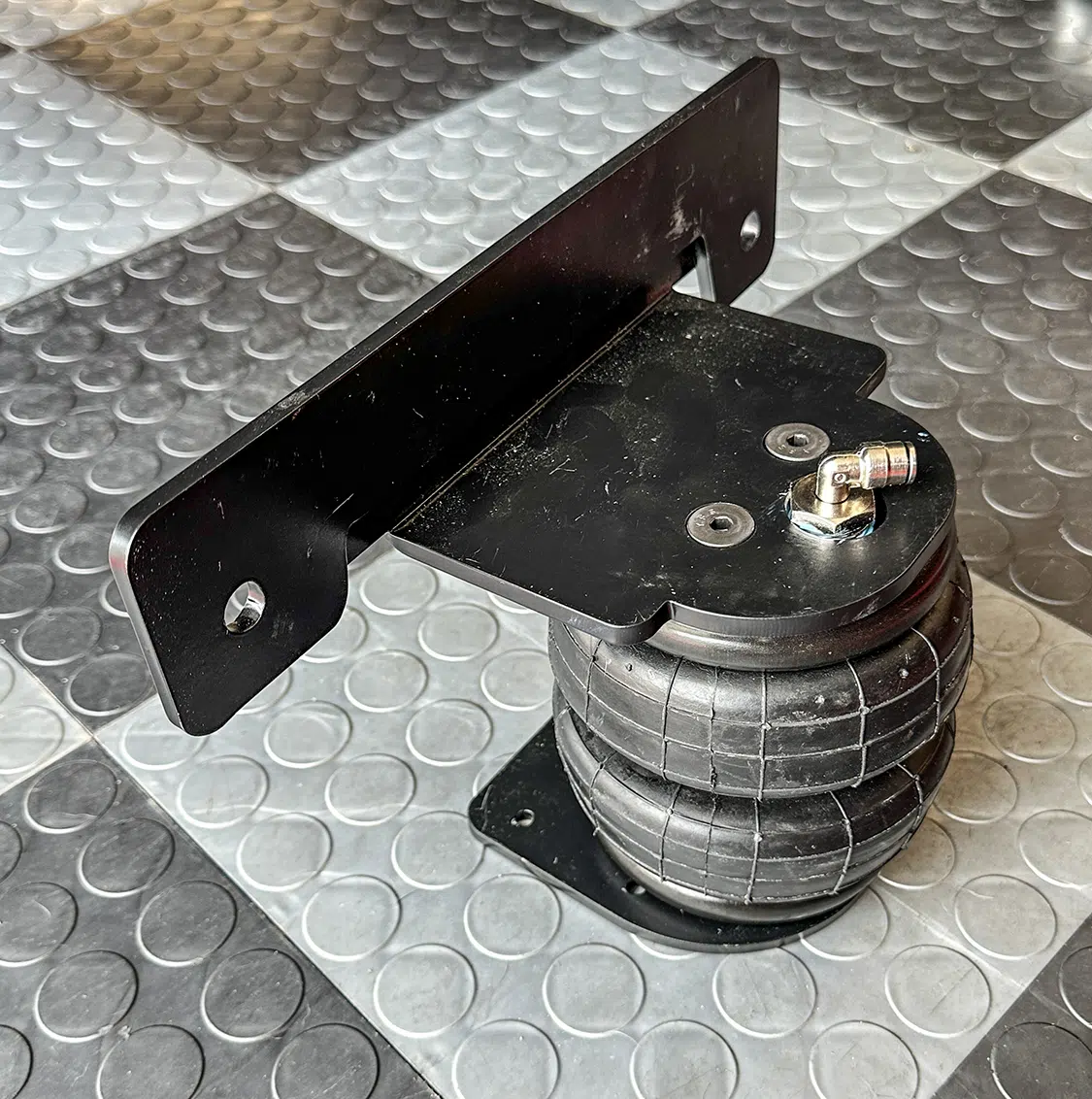
Towing a trailer is a pretty basic function of a lot of trucks on the road today. Whether it’s a boat, a camper, a small utility trailer for yard work, or, in the case of many of our readers, a car trailer, having something hooked to the receiver is common. A lot of times, if the tongue weight is too much or if the load itself is excessively heavy, the rear of the truck can squat. No one likes riding around looking like one of the squatted kids, but that’s part of towing a trailer sometimes.
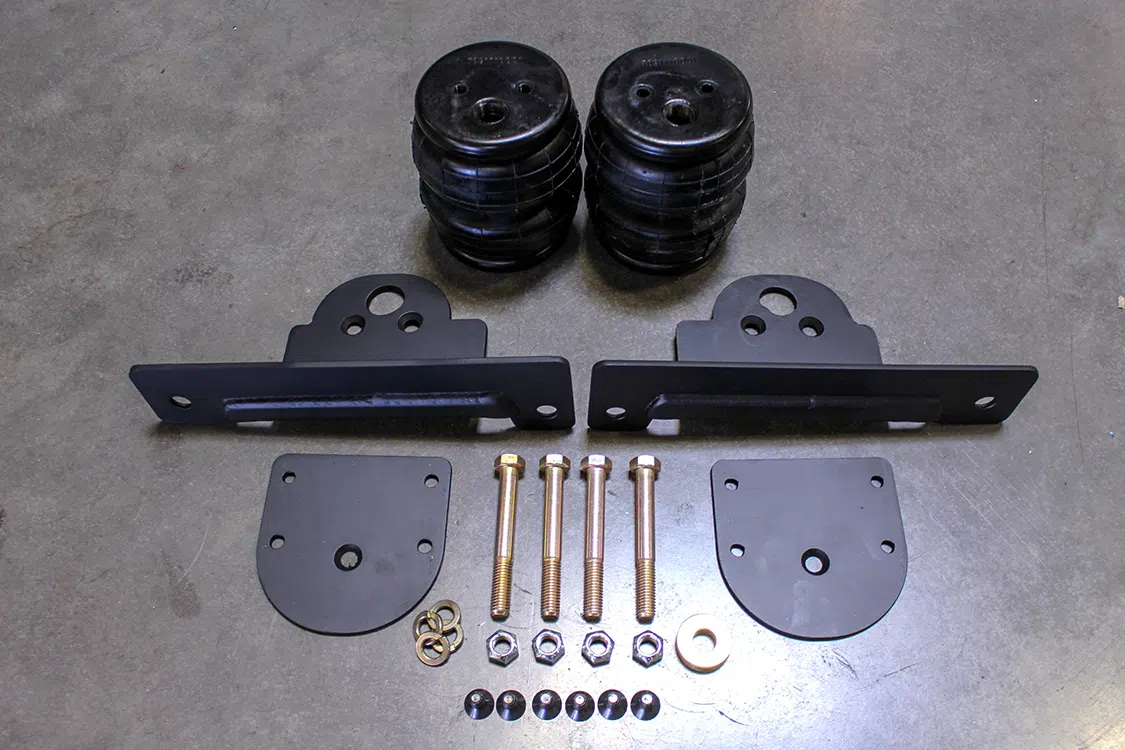
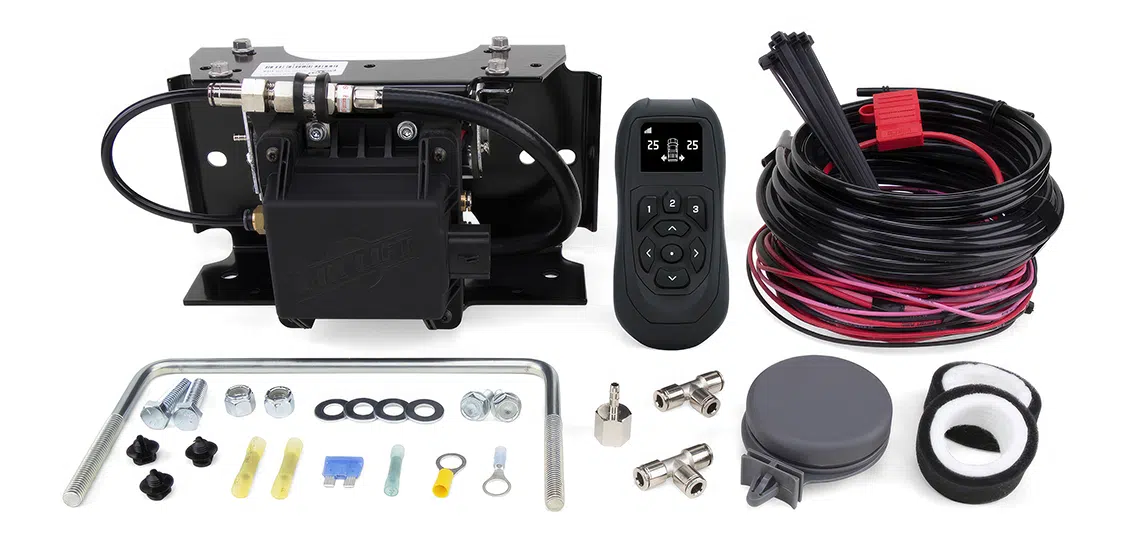
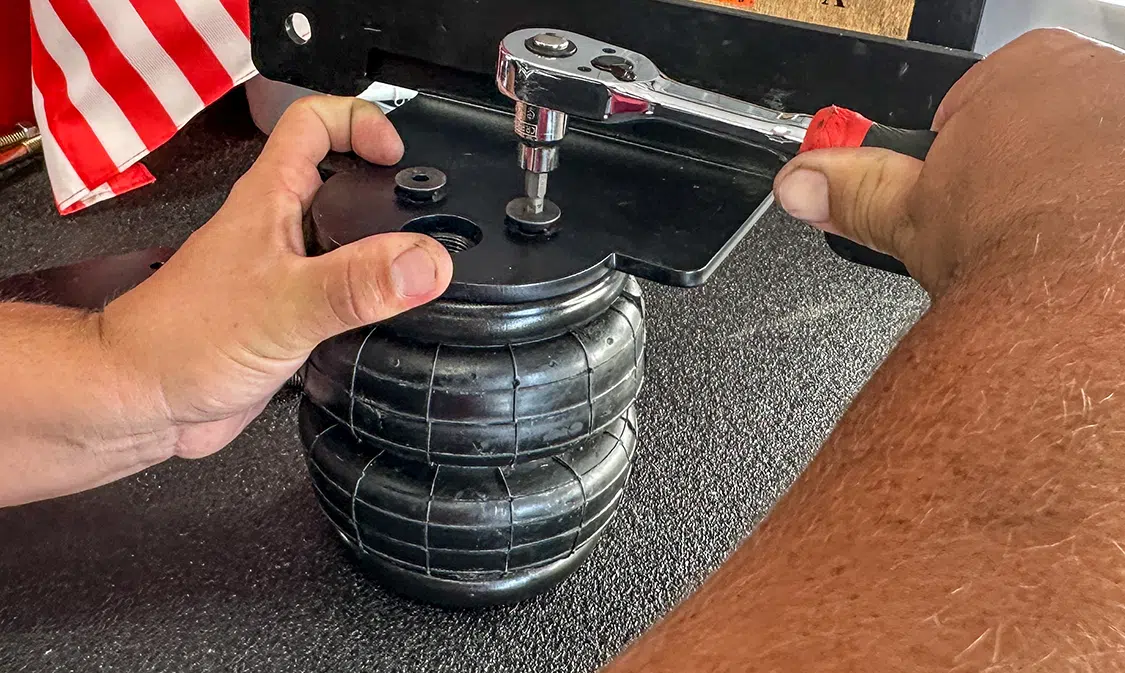
Not only does this look bad, but it’s extremely unsafe. Having your truck sit level, especially with the extra weight of a trailer, makes driving and, more importantly, stopping easier. This can also apply to those times when you load the bed down with something like mulch, gravel, or even furniture when helping a friend move.
The easiest way to fix this is to add a set of helper bags for extra support for the rear of the truck when it is sagging due to extra weight.
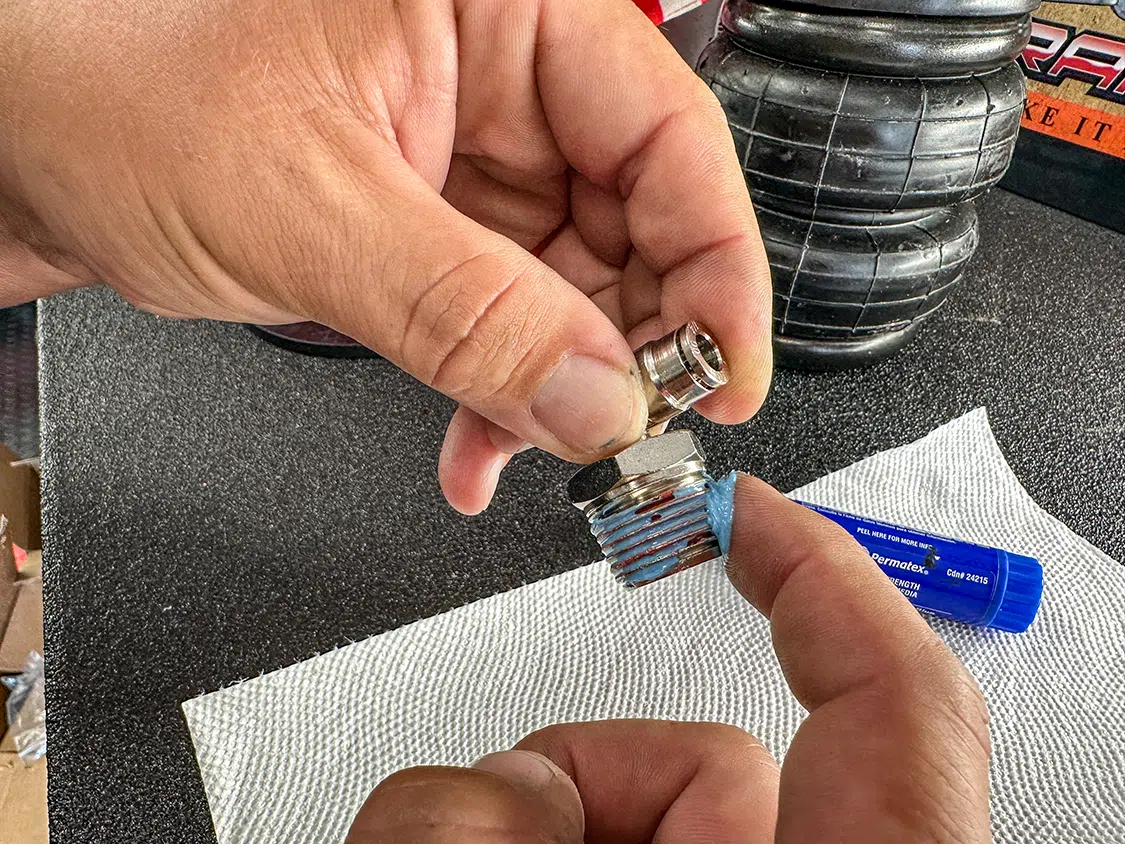
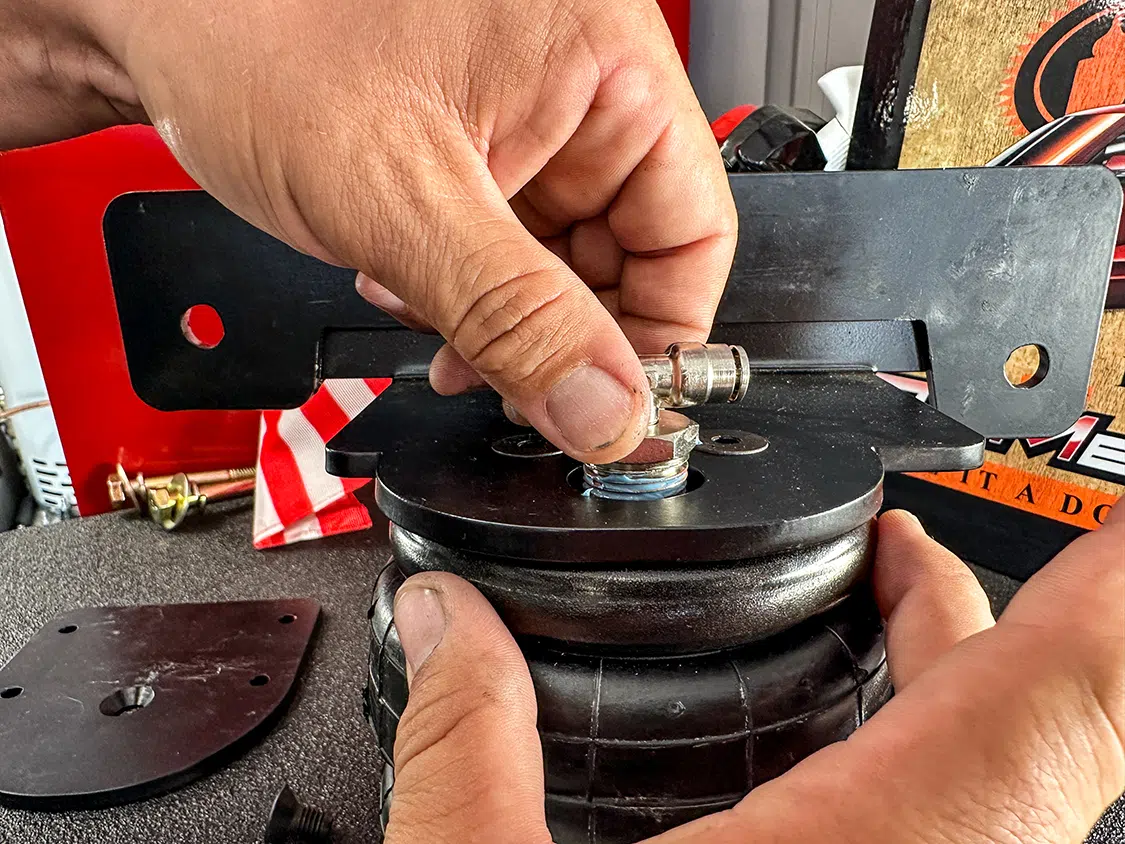
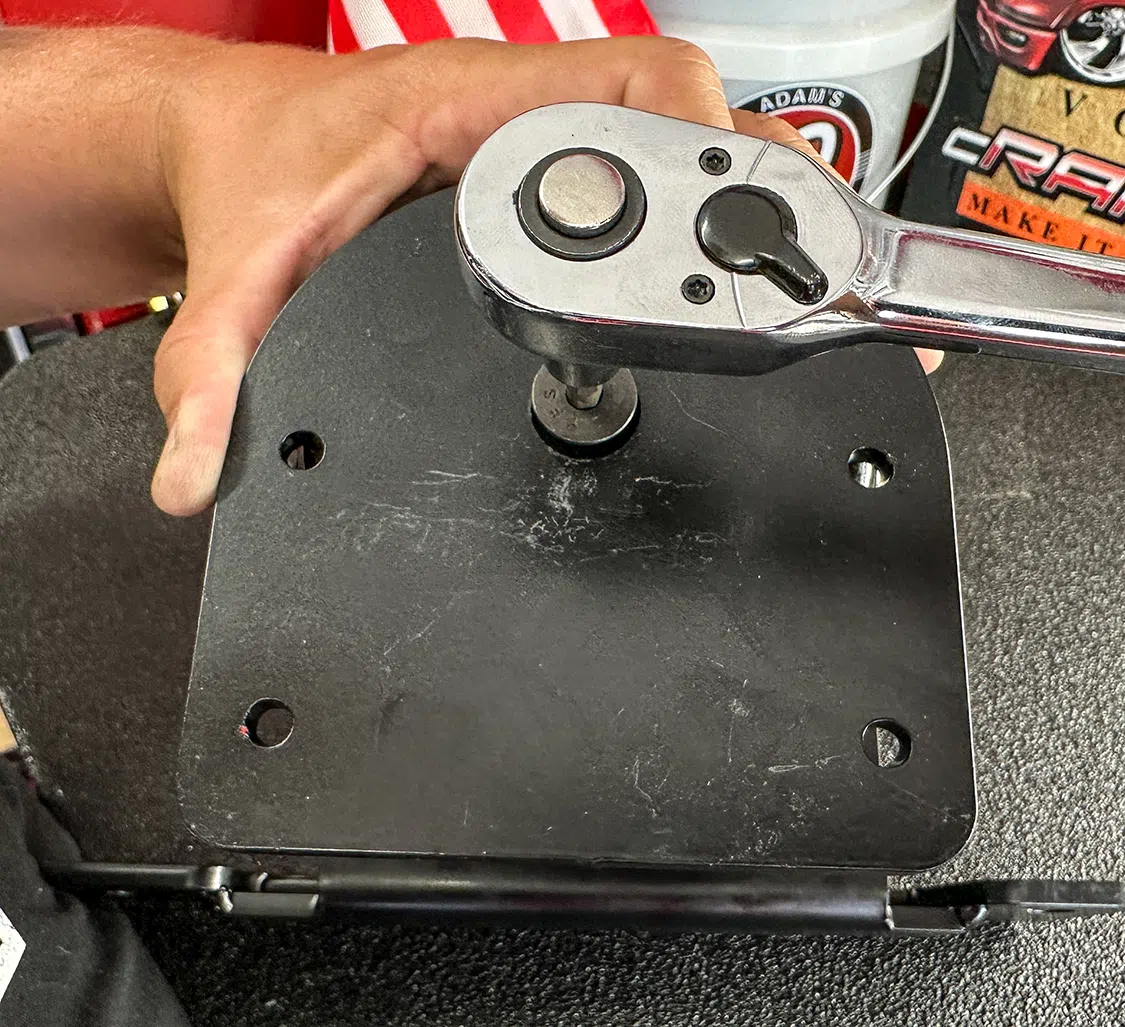
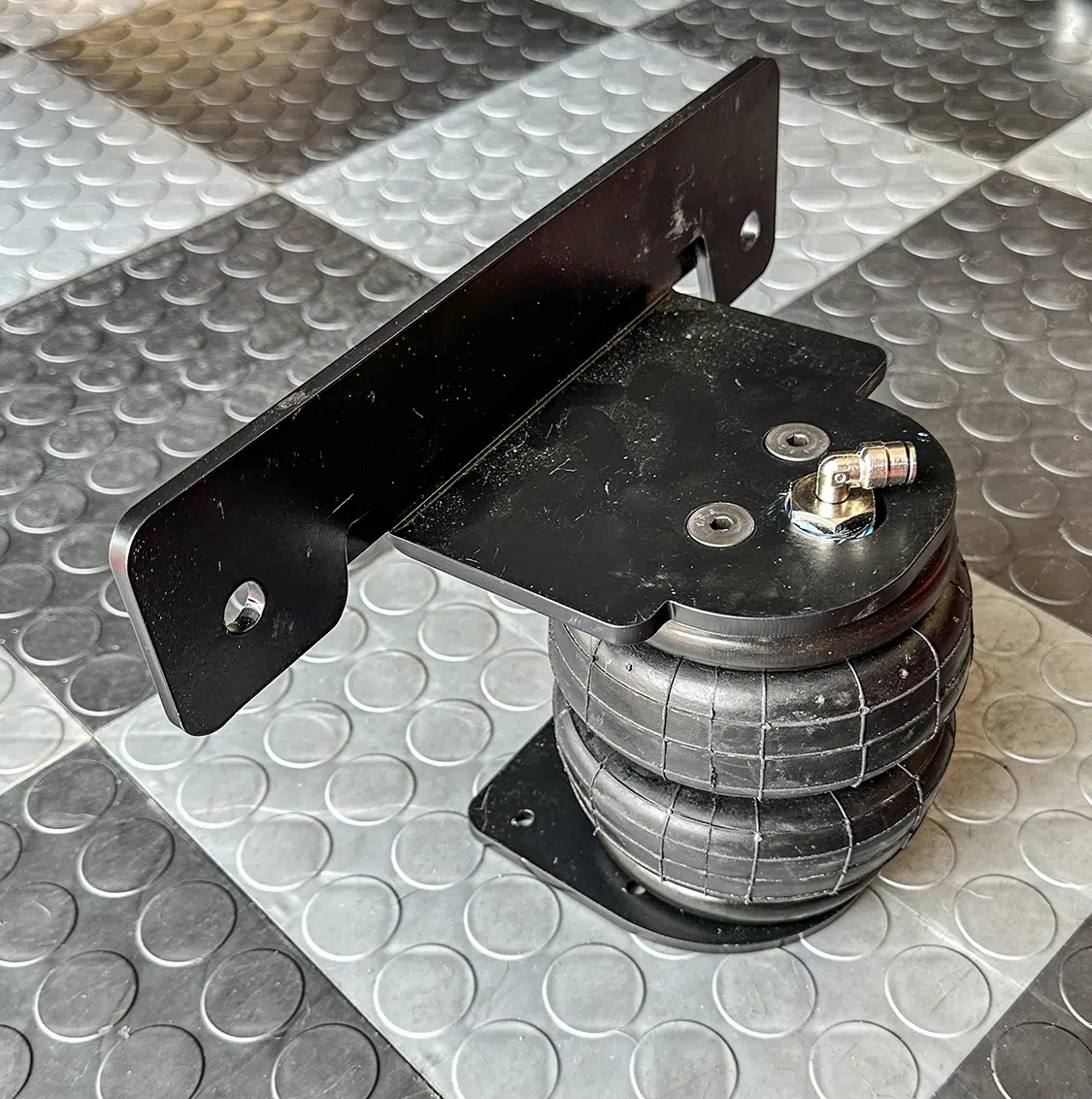
The easiest way to fix this is to add a set of helper bags for extra support for the rear of the truck when it is sagging due to extra weight. This fix allows you to add as much air pressure as needed to eliminate the sag. Normally, an off-the-shelf helper bag kit would work just fine, but for my situation, it won’t work, as this truck is already being lowered, which requires the leaf springs to be flipped.
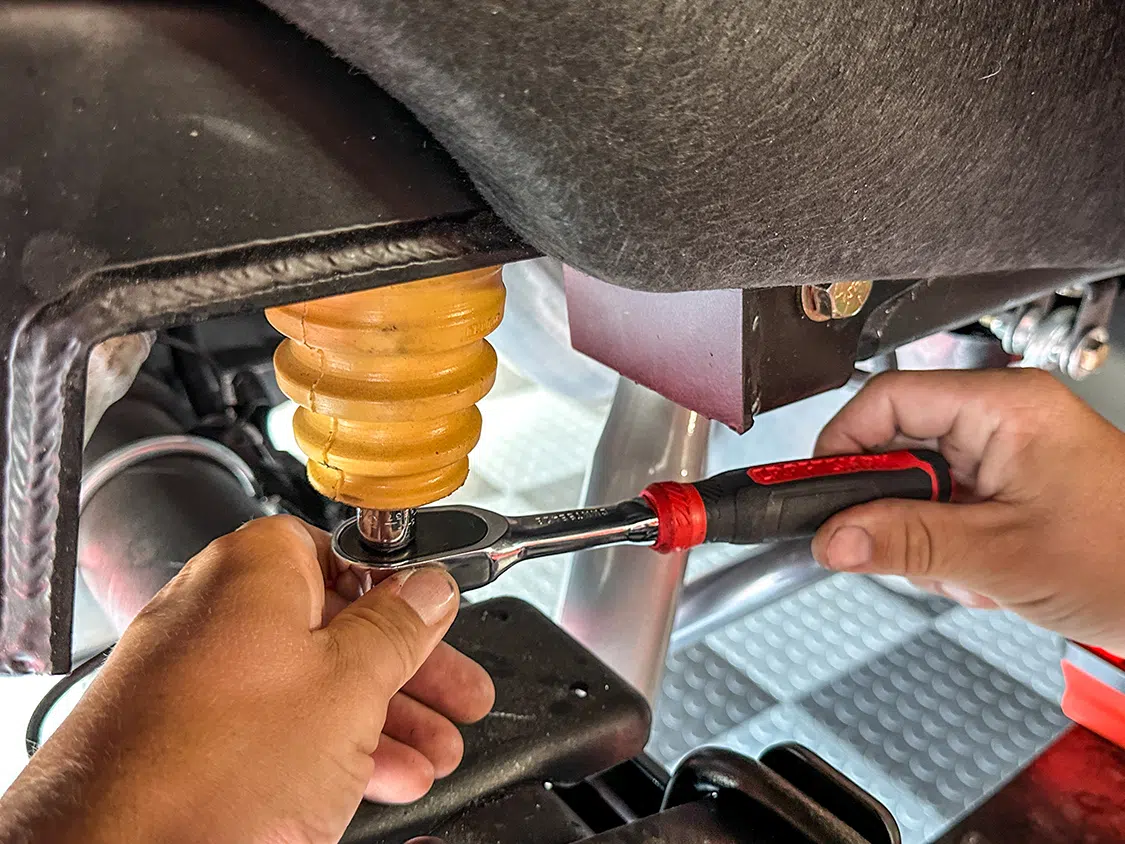
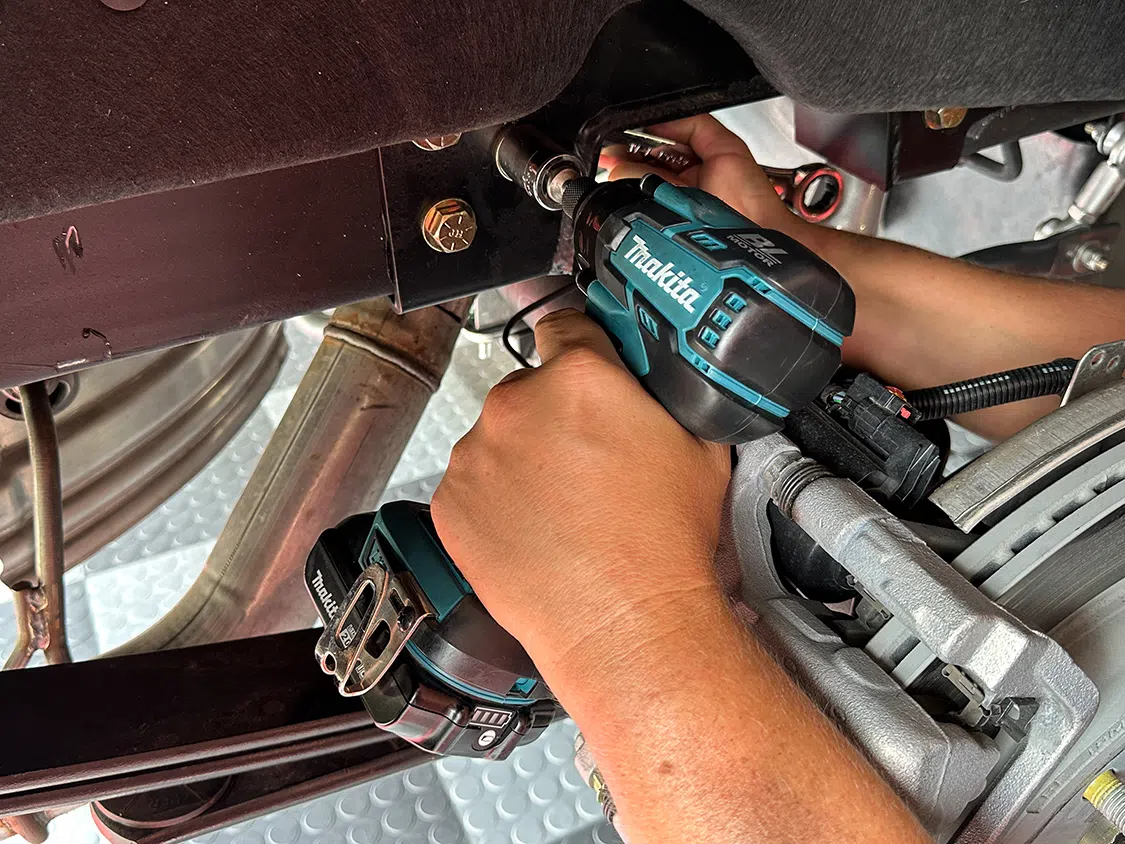
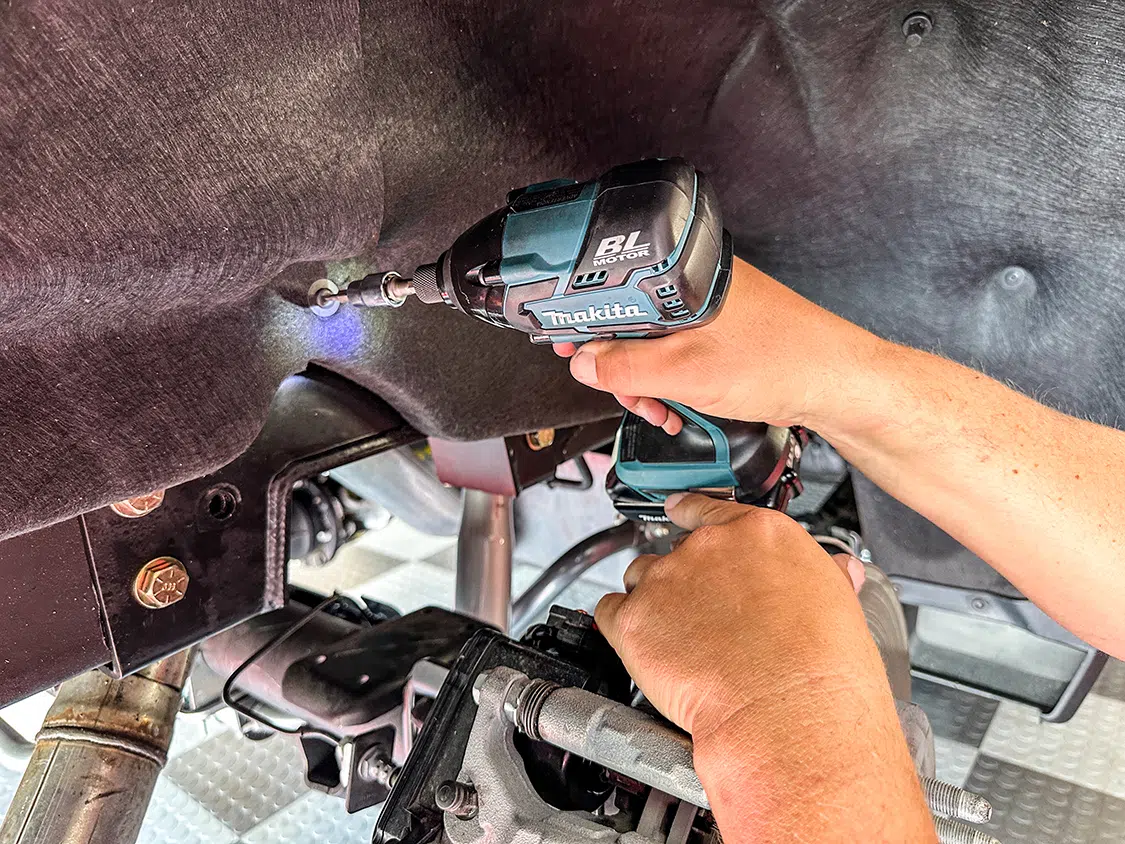
Since the Belltech lowering kit on my 2023 GMC Sierra 1500 was added (check out page 52 in last month’s issue, November 2023, for the full suspension install), we had to investigate other options. Fortunately, Switch Suspension has a helper bag kit specifically for the Belltech bolt-in notch that was used on this truck. Being this is a vehicle and aftermarket suspension specific kit, it was perfect for this application. It bolts directly to the bolt-in notch with zero modification. This kit (Part #SWIGM19AIRHELPER-1, $400 retail) is only for the ’19-’23 GMC Sierra 1500 with the Belltech 4/6-inch lowering kit that includes a bolt-in notch.
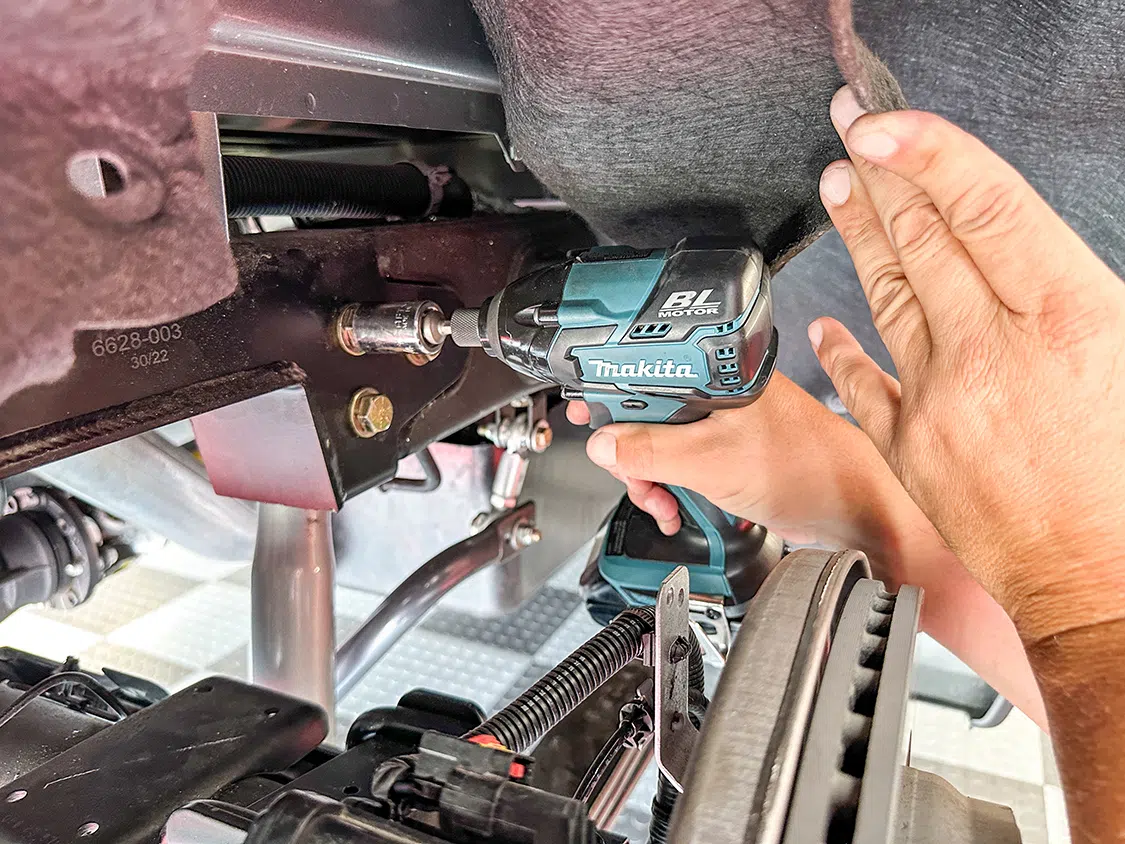
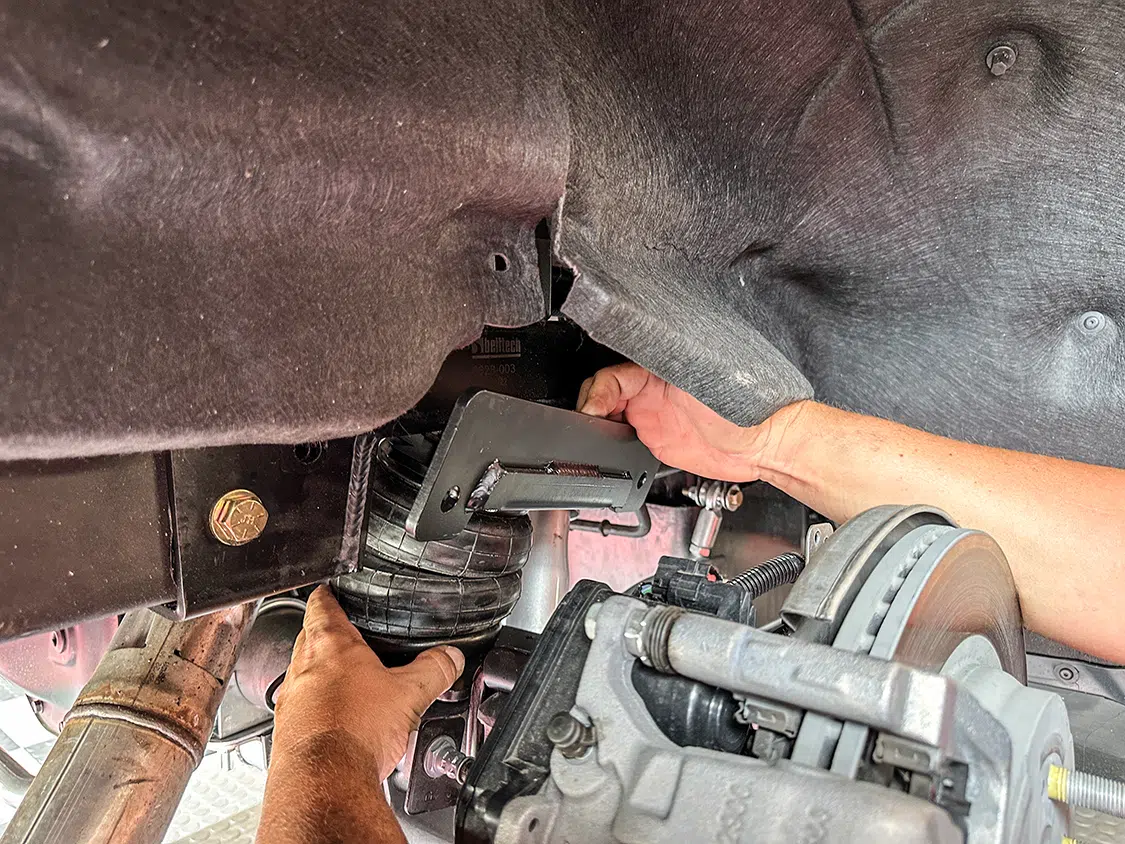
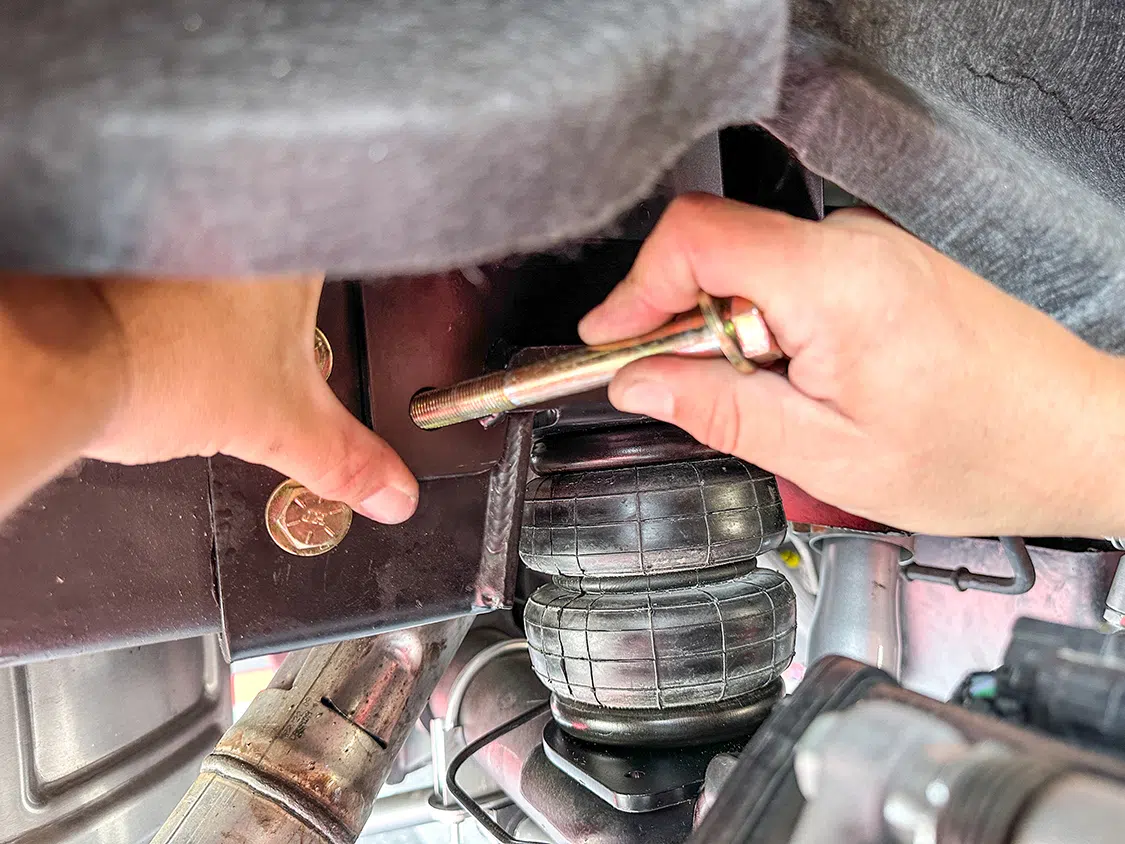
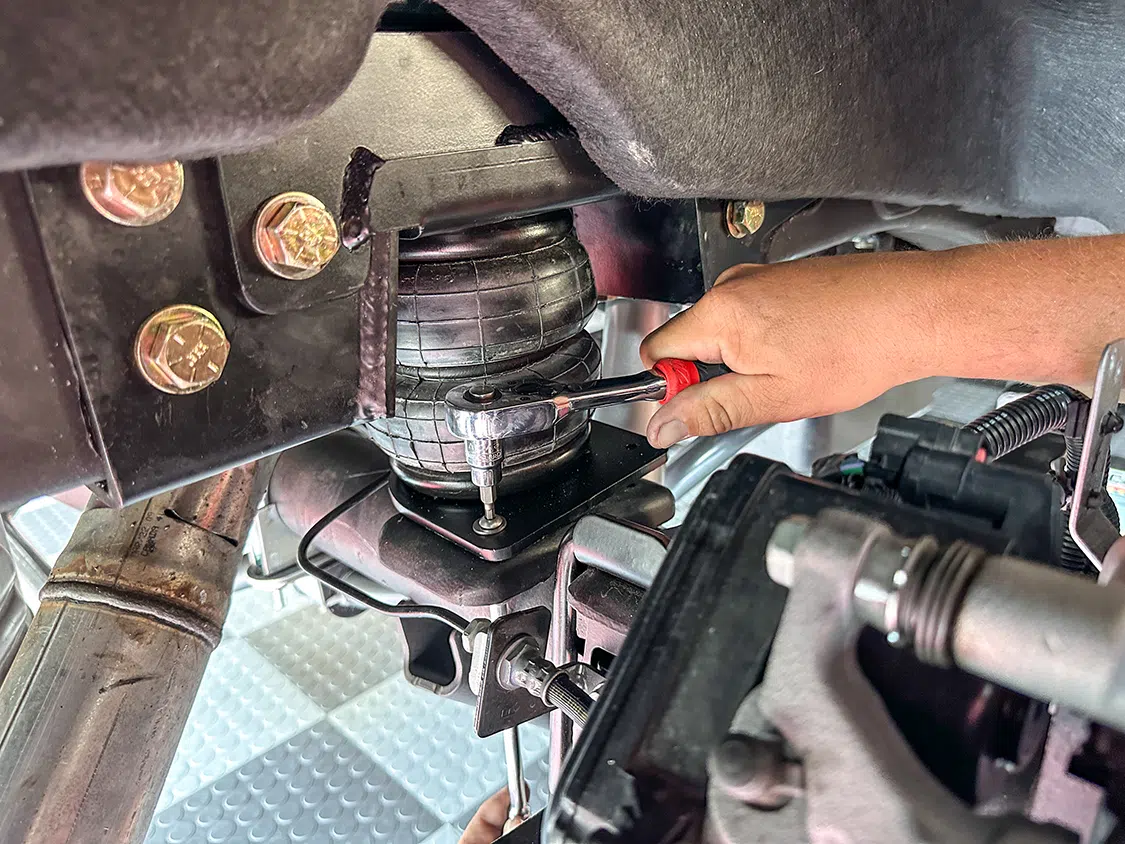
To control a helper bag system, several options are on the market, from Schrader valves to a full onboard air system. But for my use, I opted for something I could control on the fly while parked or even while driving to really dial in the perfect amount of air pressure for every specific use.
I reached out to Air Lift Company, and the experts there suggested one of the company’s Wireless Air systems (Part #74000EZ, $995 retail). This is a stand-alone unit complete with compressor, valve, and even its EZ mount system. It comes ready to bolt to your frame, plug in the wires and airlines, and you’re done. This system comes with what looks like a TV remote that can be used inside or outside of the cab. You can also control left and right bags individually in case the load is uneven. The remote has a screen so you can see the pressure in the bags at any given time and even has three presets so you can program in set pressures for regular loads.
Follow along for a quick look into how the bags and controller are installed. With basic tools, a knowledge of simple wiring, and a floor jack, this is an install that can be done pretty quick in your driveway or garage.
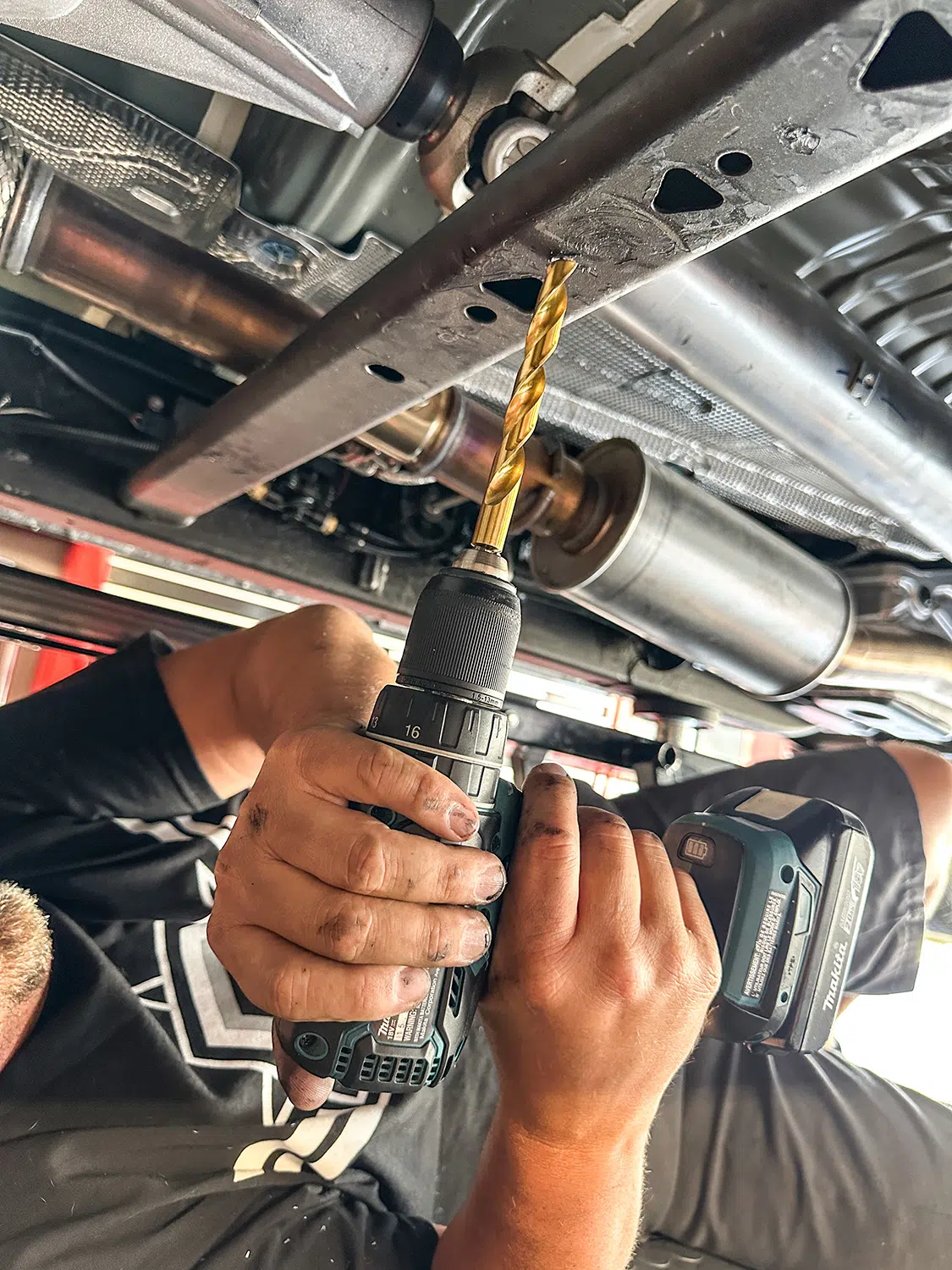
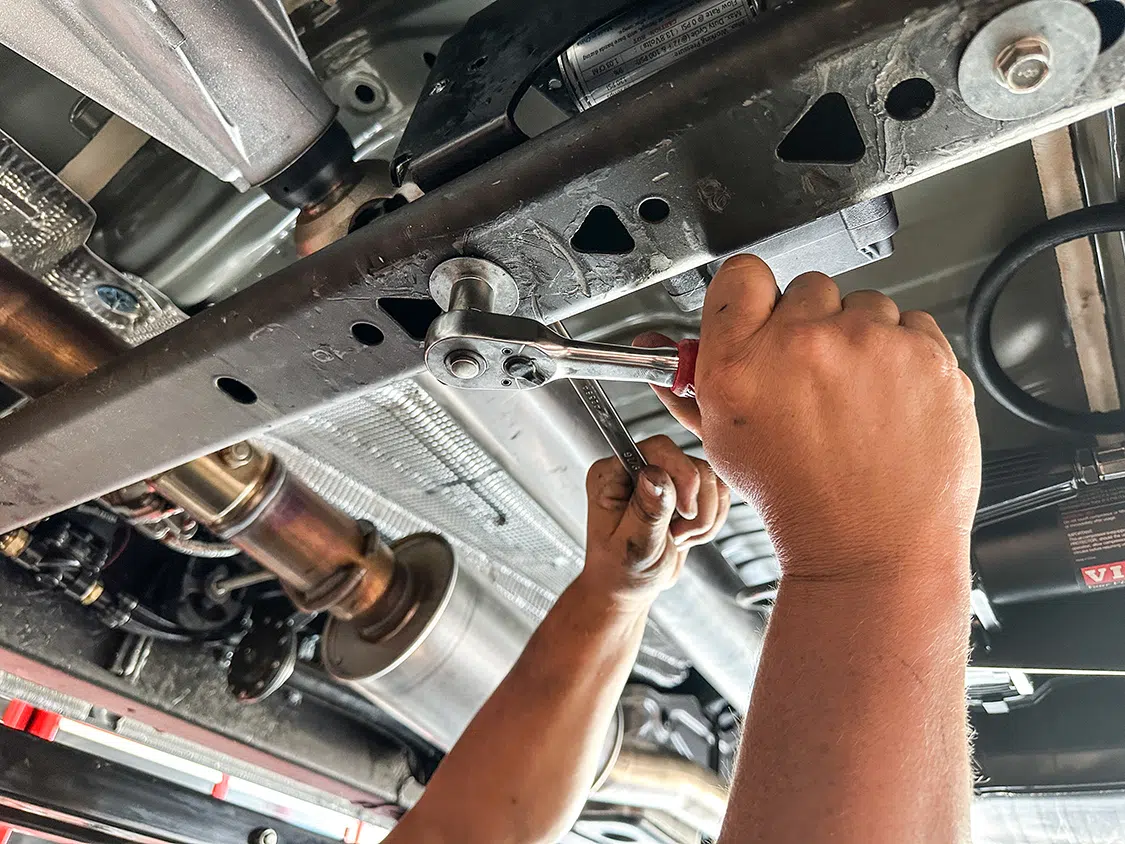
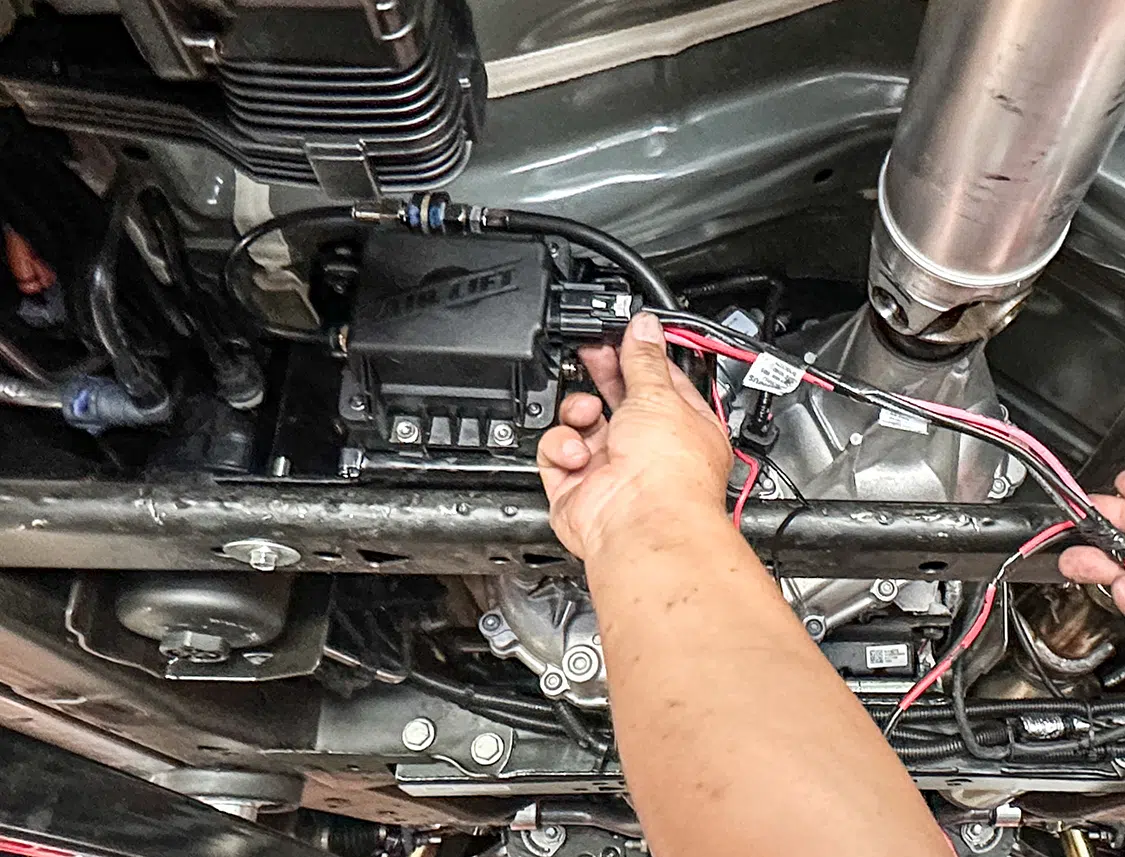
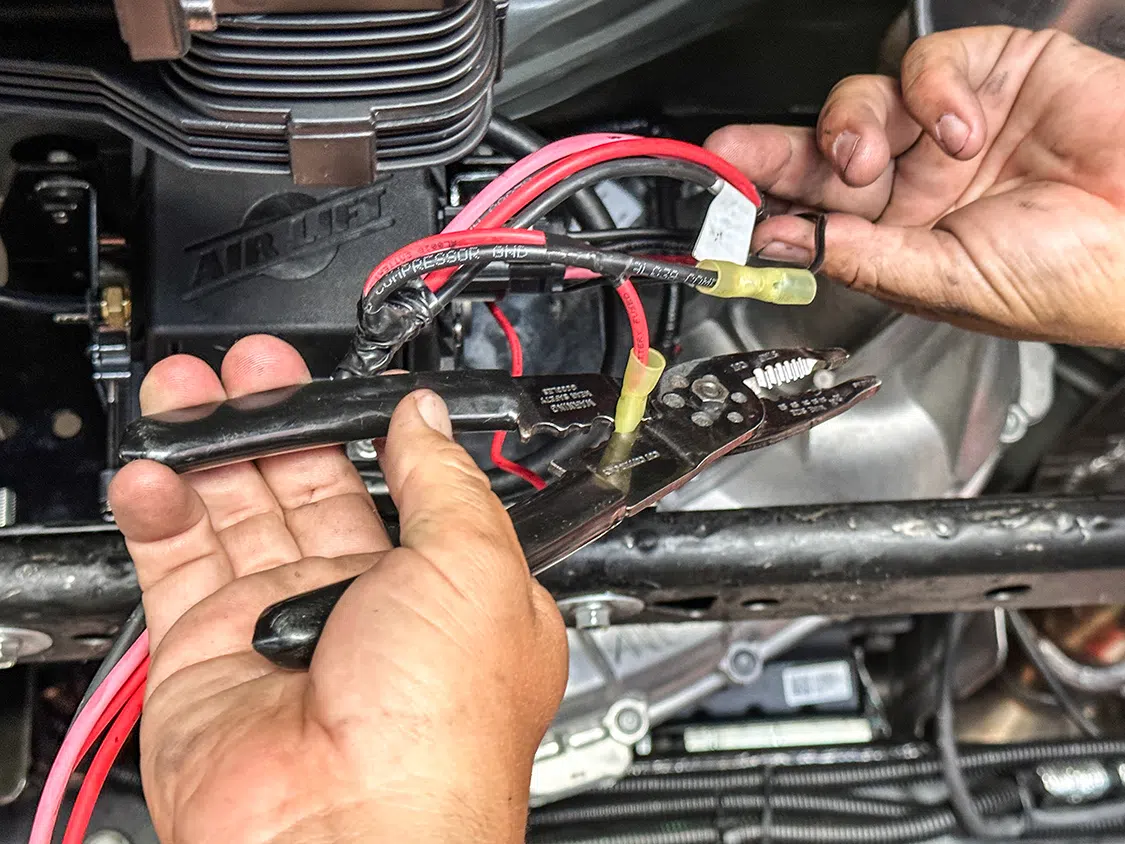
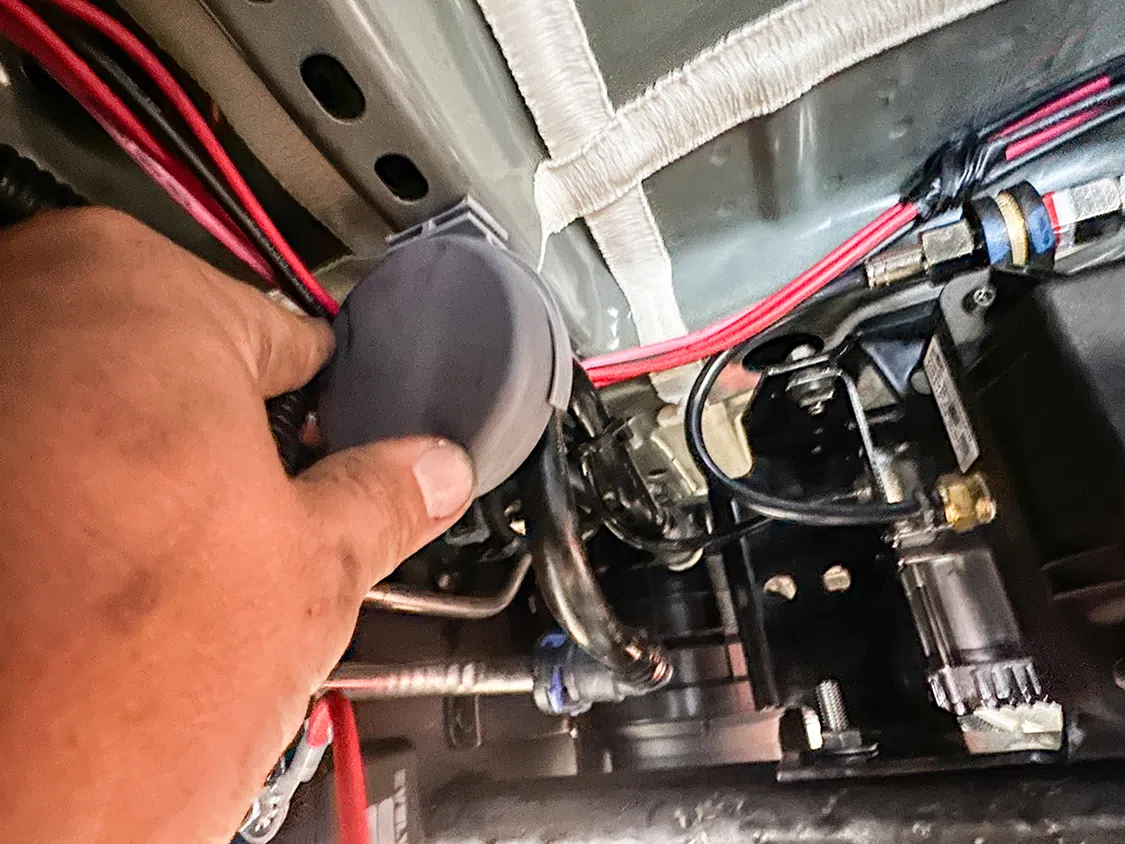
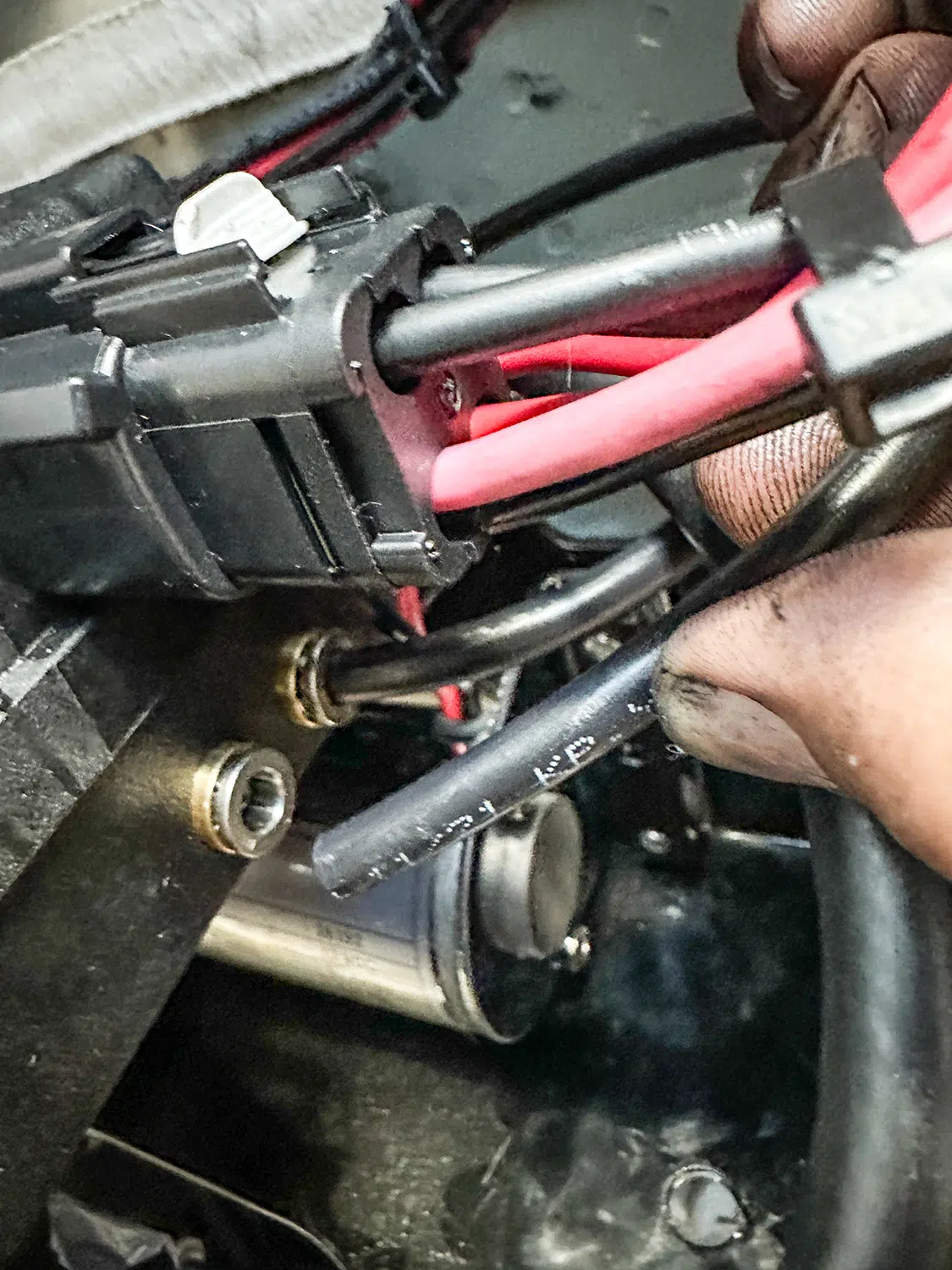
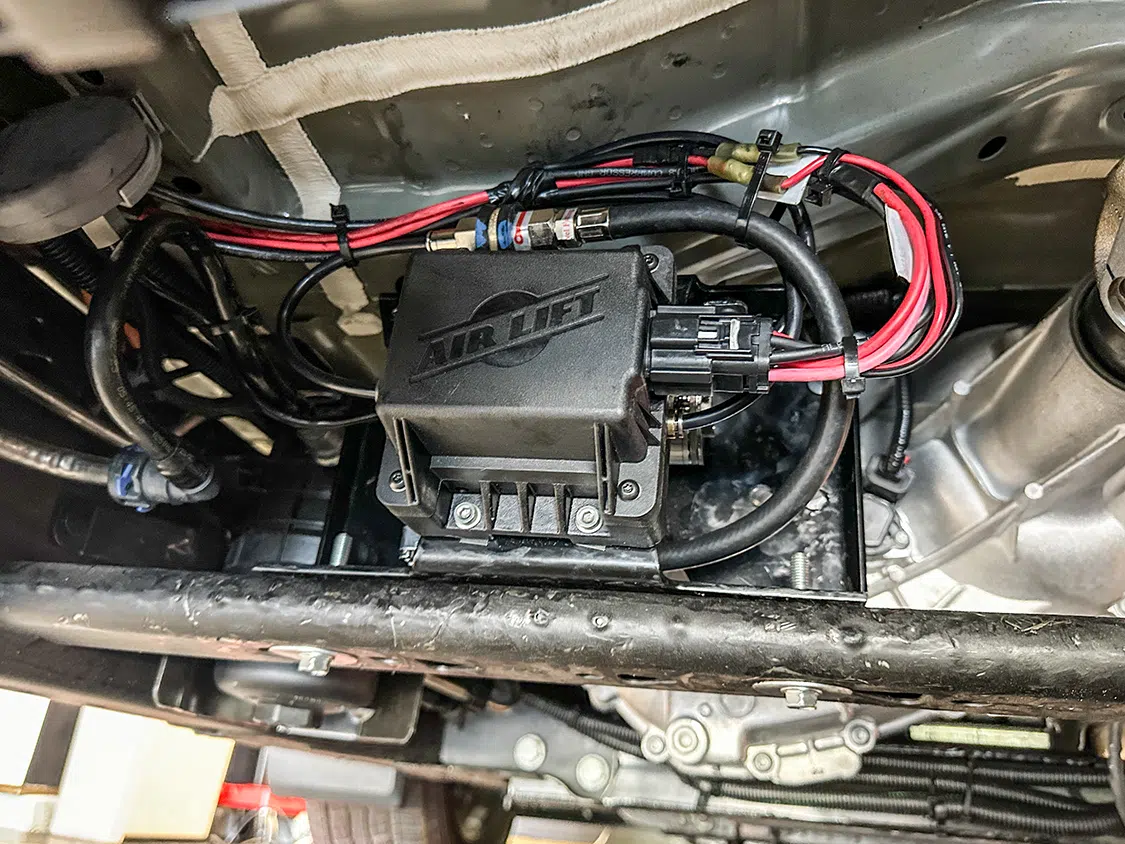
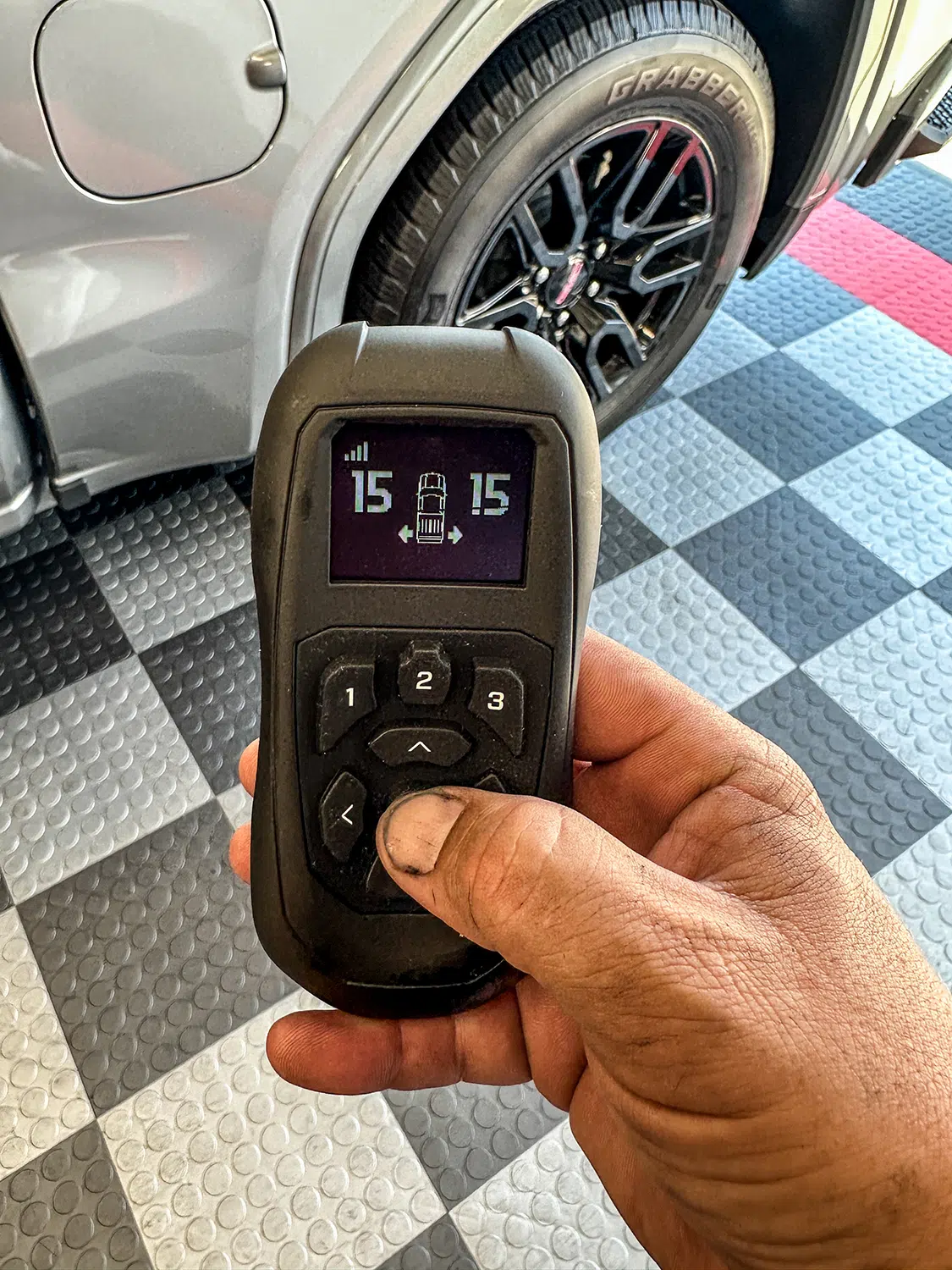
Share Link